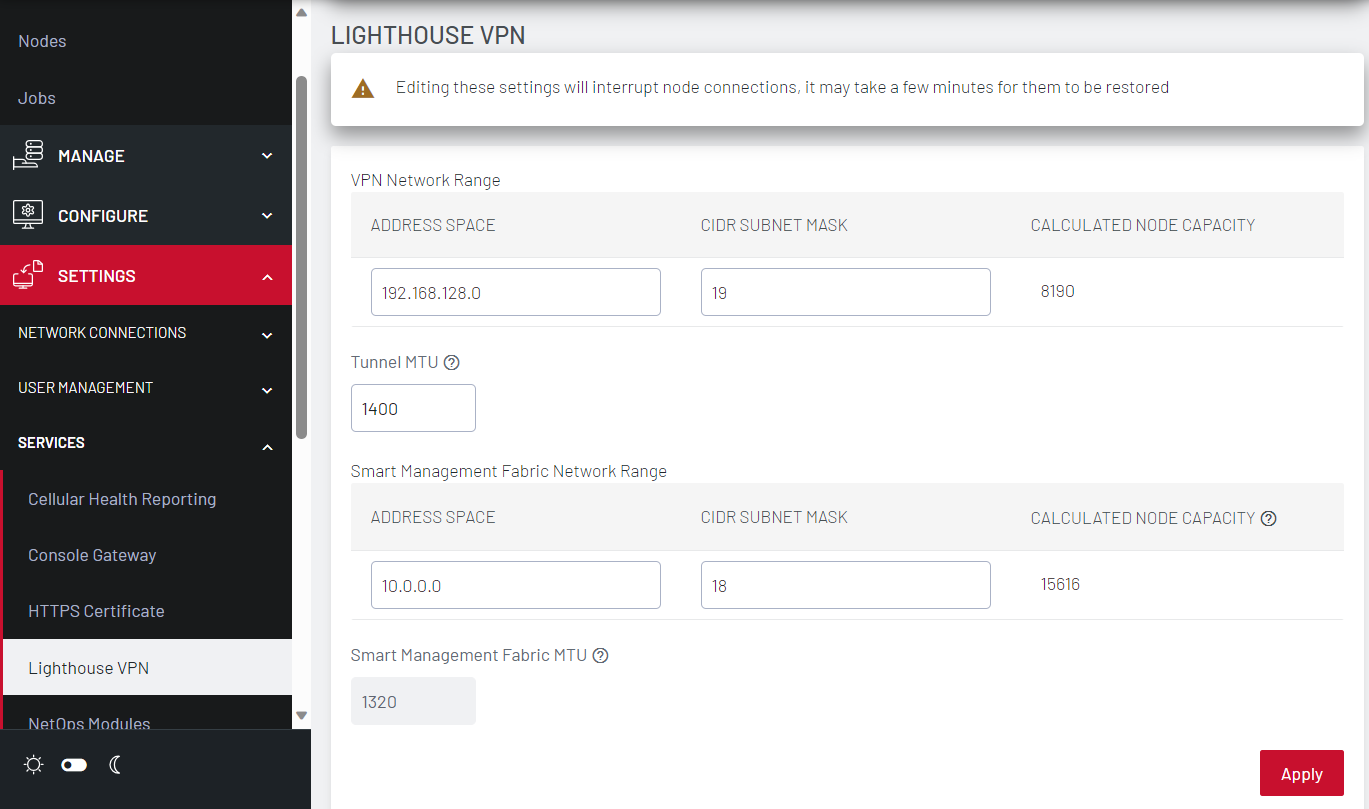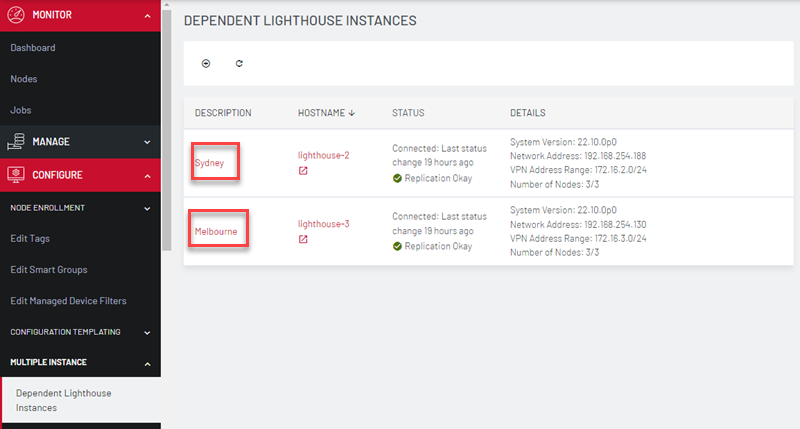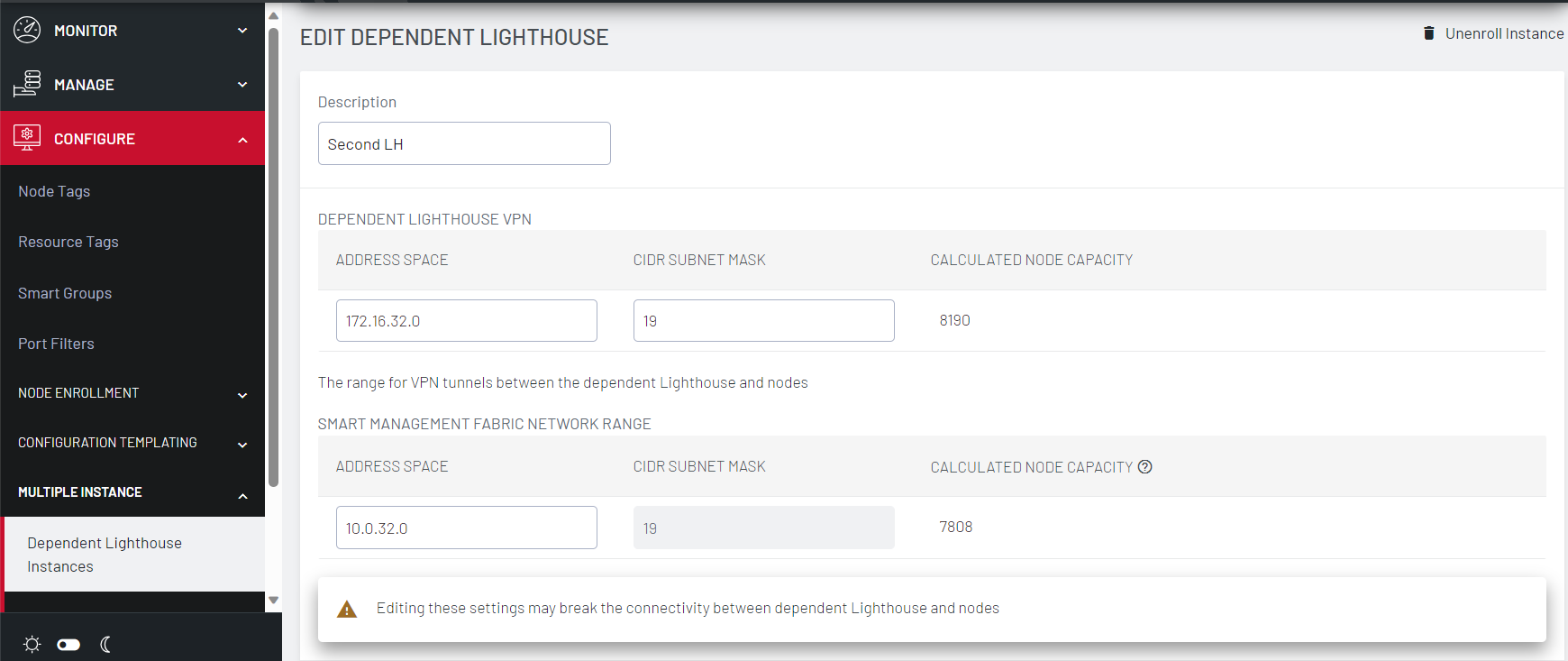Configuring Subnets for a Multiple Instance Lighthouse
A Lighthouse with multiple instance support requires multiple separate subnets for Lighthouse VPN connections:
-
Between each instance and its nodes
-
Between the primary and dependent Lighthouses.
Note: Each subnet must not overlap any subnet in use by another Lighthouse instance.
Configuring the Subnets
To configure the subnet between the primary Lighthouse and its nodes:
-
Select SETTINGS > SERVICES > Lighthouse VPN on the primary Lighthouse.

-
Enter the Address Space and CIDR Subnet Mask. The Calculated Node capacity displays the addressable nodes based on the network.
If the dependent lighthouse is to be discoverable on the Smart Management Fabric (SMF), enter the Address Space details in the Smart Management Fabric Range.
Note:A dependent Lighthouse is read-only and cannot be modified. The SETTINGS > SERVICES > Lighthouse VPN page displays the subnet used by this Lighthouse instance, but it cannot be modified directly.
-
To configure the subnet between each dependent Lighthouse and its nodes select CONFIGURE > MULTIPLE INSTANCE > Dependent Lighthouse Instances.
-
The Dependent Instances page displays. Click on the name of the dependent Lighthouse to be modified.

-
The Edit Dependent Lighthouse page displays.

-
Other information that is specific to dependent Lighthouse should be configured before enrolling but can be modified on the primary Lighthouse via
ogconfig-cli.Instance specific information includes:
Hostname.
Time zone.
Networking.
External interfaces.
The instance specific information is available on both the primary and secondary Lighthouses but it is read-only on the secondary Lighthouse.
Configurations of all Lighthouse instances are stored in
lighthouse_configurations.These can be viewed via
ogconfig-cli. The primary instance will have a value ofPrimaryfor its role, and dependent instances have the valueSecondary.The following is an example of the
ogconfig-clisession:root@lighthouse:~# ogconfig-cliogcfg> print lighthouse_configurations[0].rolelighthouse_configurations[0].role (string): 'Primary'ogcfg> print lighthouse_configurations[1].rolelighthouse_configurations[0].role (string): 'Secondary'Alternatively, the command
/usr/bin/is_secondarywill outputnfor a primary Lighthouse oryfor a secondary. -
You can modify the configuration of secondary lighthouses from the primary Lighthouse. For example, to update the hostname of the secondary Lighthouse, run the following commands on the primary Lighthouse:
ogconfig-cliset lighthouse_configurations[1].hostname new_namepush